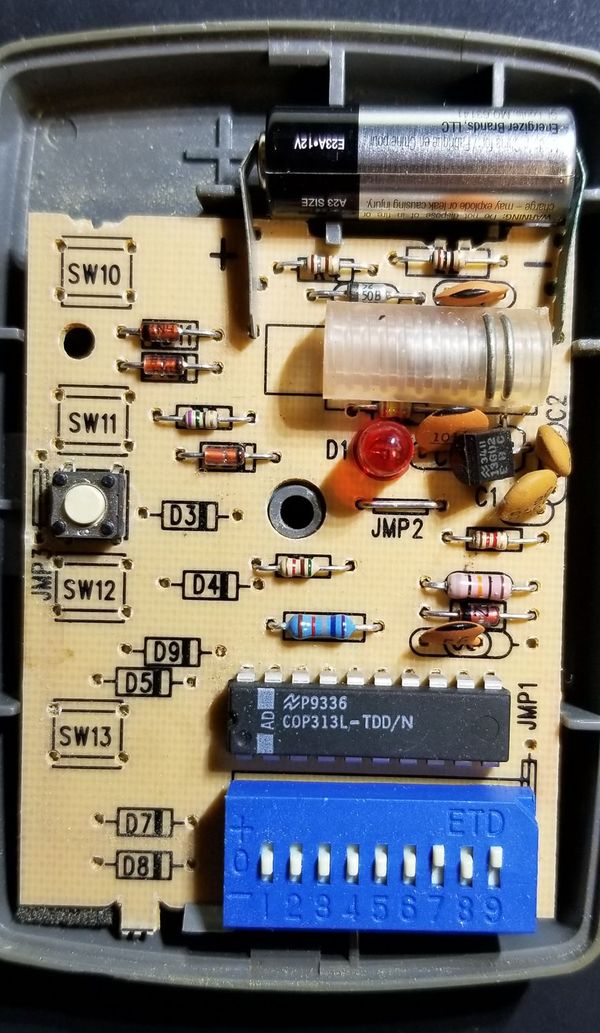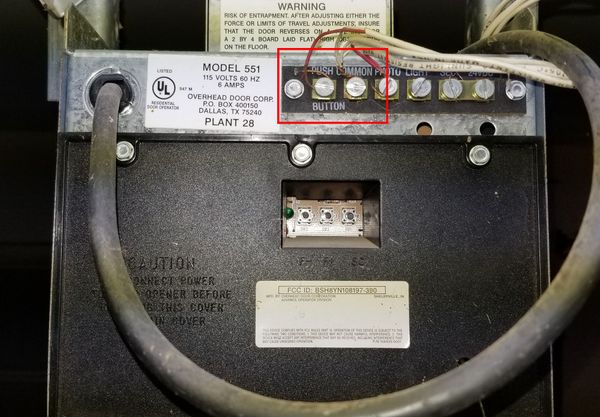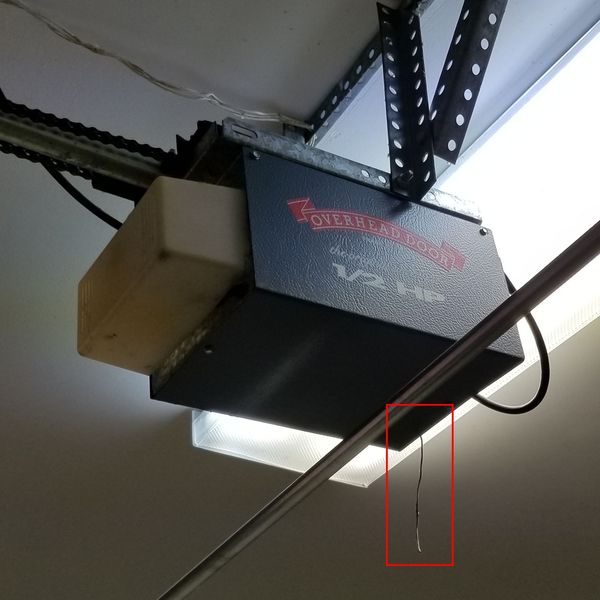Upgrade your 1990's garage door opener to work with universal remotes and smart homes
There was a time when garage door openers were in a bit of a limbo with the standards used to communicate from the remote to the opener. Before 1993, many openers used a single frequency and DIP switches as their only configurable option to avoid interfering with other openers. After 1993, most manufacturers switched to the “rolling code” method that introduced the now familiar “press the button on your opener to pair a new device.” To further convolute things, The Overhead Door Corporation (owned by Genie) also produced a separate system between 1985 and 1995 that was essentially proprietary. It is also rare enough that almost no one supports it AT ALL. As in, there are no universal remotes, no learning devices, etc. that can be used to replace a broken or missing remote. You pretty much are relegated to finding a used original remote, set the DIP switches accordingly, and hope that it lasts given that it is already a nearly 30-year-old piece of hardware.

I found out about all this the hard way - when moving into our house, I learned that we had two Overhead Door openers from 1993 - and I couldn’t find any solutions to get rid of the original, incredibly bulky, non-secure remotes. At least, not until some exhaustive searching.
Why Not Just Leave It the Way It Is?
Not only were the remotes I inherited from the previous owner in poor shape, the lack of compatibility made it impossible to even think about integrating my garage doors into my smart home paradigm. One of our cars had HomeLink, which I have always liked, and it was a bit of let down to find that I couldn’t even get it to support these openers. Not to mention, the only thing between you and someone opening your door is a DIP switch combination that is easy to capture both physically and even over-the-air with the right device. No security. No compatibility. But the last thing you want to do is replace a perfectly good opener just because the transmitter is out-of-date.
Creative Searching Finally Revealed a Solution
It turned out that, while Genie doesn’t make a universal remote to support their own devices under their manufacturing umbrella in the early 90’s, they do make a box that essentially replaces the receiver system of your existing opener and makes it a modern, rolling-code enabled opener - all without having to replace or even do much retrofitting to your existing opener. Many, many hours searching Amazon finally yielded a solution that matched all my criteria and I had no idea existed.
The Genie GIRUD to the Rescue
The Genie GIRUD solves all the problems I encountered and upgrades your opener to a modern Genie Intellicode rolling-code compatible opener. It includes all the parts to install it and even includes one of the small three-button learning remotes. I installed one of these on each of my openers and immediately was up to date, enabling me to use any universal remote or device on the market.
How It Works
Rather than trying to communicate with the opener through radio frequency, this box actually takes the place of the receiver and is hard-wired to your old opener. The new box works listening for a valid control command and simulates a button press (like the button already wired to your opener and most likely mounted on your wall) to control the opening and closing of the door. This means that it will work with any opener that has the two contacts to support a wall switch - which just about all do.

Installation and Configuration
Installation was rather straightforward with good instructions. The primary requirements are that you mount the new receiver physically in front of the old opener by a few feet. Run the included wire from the receiver to your opener and attach to the proper terminals. At this point you are ready to begin pairing devices to the new receiver which is done via the aforementioned “push to pair” mechanism that almost all modern openers use. Use it to pair additional remotes, outdoor keypads, or smart home systems such as MyQ. I installed one for each opener and didn’t run into any major issues with either install. The final, important step (after thoroughly testing of course) is to find the antenna on your old opener (usually a small wire hanging out of the unit) and cut it to reduce the chances that it will ever respond to an old remote again. This is important to eliminate the possibility of interference, but also to make your opener secure by making the new receiver the only one that can open and close the door.

A Great Solution to a Daunting Problem
The thought of having to replace perfectly good, working garage door openers just to be able to use the devices on today’s market made me a bit nauseous. Garage door openers are not fun to install, and it is even less fun to pay several hundred dollars for a new opener plus installation. To my knowledge, the Genie solution is one of the only ones out there, and few people seem to know about it. I’ve had several people with houses built around the same time as mine who have resorted to duct taping their giant remotes to keep them working because they think there are no other solutions. For under $70 and around an hour of install time per opener, these receivers are well worth it to go from the stone age to a future-proof garage door opener ready for the smart home treatment.